
How to make toys for the development of fine motor skills of the child's hands / Toys with their own hands, patterns, video, MK
Since the problem of development of speech is considered oneof the most important and widespread in recent times, educators and speech therapists are accentuating the attention of their parents. The fact is that it has long been confirmed with the help of various studies that between the development of the brain and the development of the hands there is a very thin and close connection, so that the formation of speech areas occurs due to the influence of kinesthetic impulses from the fingers. The toys and games for the development of fine motor skills are extremely are useful, because with their help you help the child to master and form various necessary skills. But apart from that, you make an indirect contribution to the development of your child's speech, his thinking, his creative abilities, his memory, coordination of movements, etc. 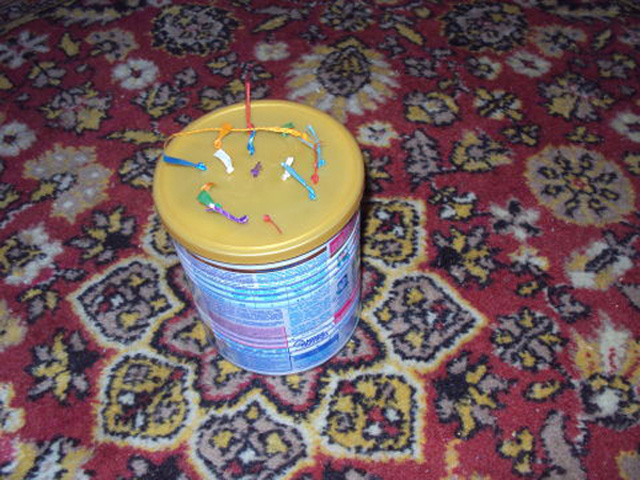

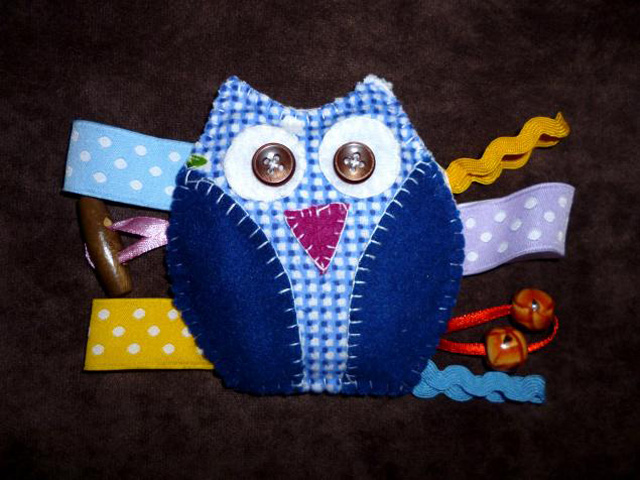
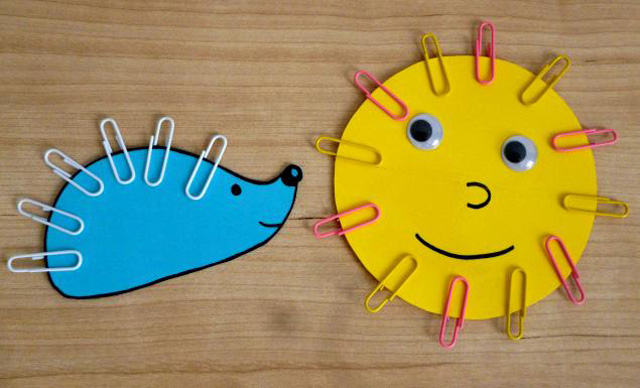
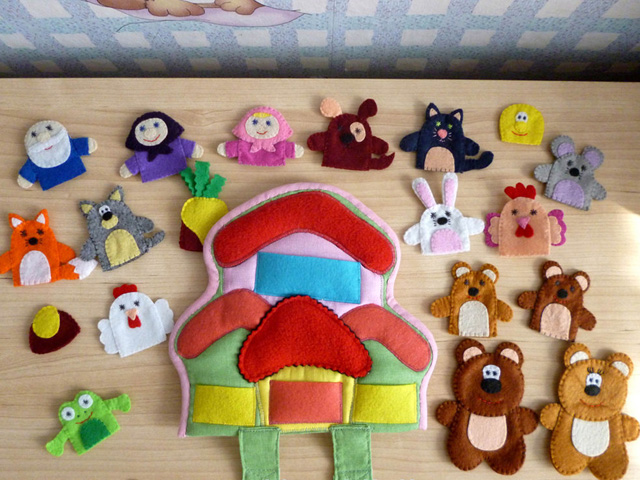











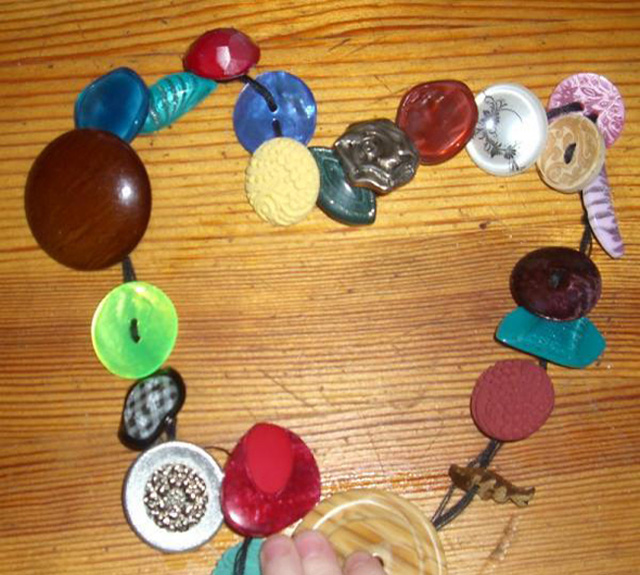



What to choose for a child?
Educational toys for children can be bought (good, today they are on sale in the largest variety), or make by yourself. Among such crafts can be:
- developing mats or panels on which you can place any tasks and games;
- touch pads or other objects;
- lacing in all hypostases;
- Velcro, locks, buttons, buttons, caps, clothespins;
- developing books with a lot of tactile tasks;
- toys for the development of fine motor skills with water, grains, sand;
- puppet show;
- didactic games.
All this can be created and created in anythe thematic direction, in parallel mastering the account, letters, numbers, colors, geometric figures, names of those or other subjects. The toy, made by own hands, will grow and change as the child grows. Learn the baby gradually, starting from an early age. First he will try all the parts and parts for the tooth, so take care of the safety and naturalness of the materials. But then, gradually growing older, the child will begin to master these or other skills: tie a string, fasten buttons and a lock, etc. Even such simple skills will be useful to him for independent treatment of clothes. Not to mention that training the muscles of the hand will save you from visiting the speech therapist and problems with writing in the school. Do not force or scold the child, because to improve fine motor skills, and therefore speech, you need positive emotions - the baby and yours.
Toys for personal development
The simplest, but very useful things you can domake from improvised materials - quickly and simply. The magic chest (or any other capacity). Take a box or a small box in which one wall can be replaced with a transparent one. Fill it with objects of different size, texture and shape: small soft toys, geometric figures, plastic dummies of vegetables and fruits, letters, numbers, etc. The kid will sort out the treasures in the magic chest and guess the object by touch. It can also be used as a didactic game: to search for an object of that form or size that is indicated, describe objects to the touch and so on. 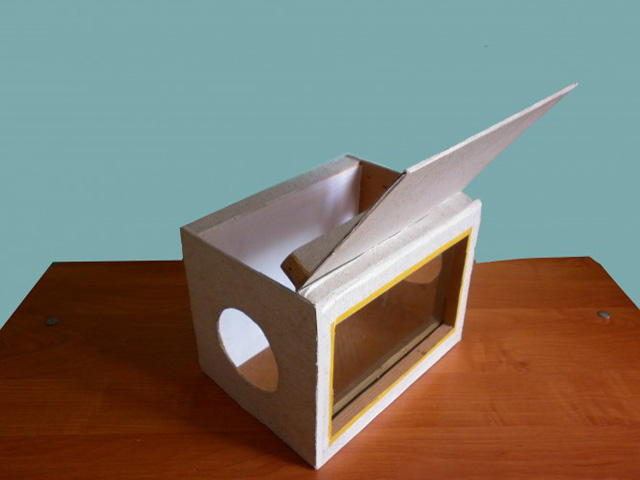 Sensory pads (they can be done in the form offabric bags, different toys, in any form). They are made very simply: all the materials (cereals (peas, beans, buckwheat, rice), beads of various sizes, coins, and so on, are covered in the sewed fabric blank (can be transparent, or dense) etc. If the child is small, it is better to sew them tightly, and if older - the treasure can also move, as in the case with the chest. It seems to be done and "emotional balls": lightly inflating the balloon, pour soft rump (manga, for example) into it and tie it tight. A marker can be used to paint a ball for balls. At the same time you can teach with the child various emotions: joy, sadness, surprise, delight.
Sensory pads (they can be done in the form offabric bags, different toys, in any form). They are made very simply: all the materials (cereals (peas, beans, buckwheat, rice), beads of various sizes, coins, and so on, are covered in the sewed fabric blank (can be transparent, or dense) etc. If the child is small, it is better to sew them tightly, and if older - the treasure can also move, as in the case with the chest. It seems to be done and "emotional balls": lightly inflating the balloon, pour soft rump (manga, for example) into it and tie it tight. A marker can be used to paint a ball for balls. At the same time you can teach with the child various emotions: joy, sadness, surprise, delight.  Another useful occupation for the hands can bejust rasshiranie any cereals, but this lesson will suit older seniors. To make the game didactic, try to build some animal, for example, a pig from a plastic bottle. It can be decorated with a knitted cover or other clothes, and tying up the lid, it's easy to make a patch. Four more knitted caps are suitable as paws, and the tail can be tied from threads. Children will come to feed the piglet (twisting the piglet): acorns, chestnuts, large beans, etc., can be used. On small grains you can draw, pour them, peel and fold in separate containers. Speech therapists say that it is also good to play with sand - sand therapy is an excellent training for hands.
Another useful occupation for the hands can bejust rasshiranie any cereals, but this lesson will suit older seniors. To make the game didactic, try to build some animal, for example, a pig from a plastic bottle. It can be decorated with a knitted cover or other clothes, and tying up the lid, it's easy to make a patch. Four more knitted caps are suitable as paws, and the tail can be tied from threads. Children will come to feed the piglet (twisting the piglet): acorns, chestnuts, large beans, etc., can be used. On small grains you can draw, pour them, peel and fold in separate containers. Speech therapists say that it is also good to play with sand - sand therapy is an excellent training for hands. 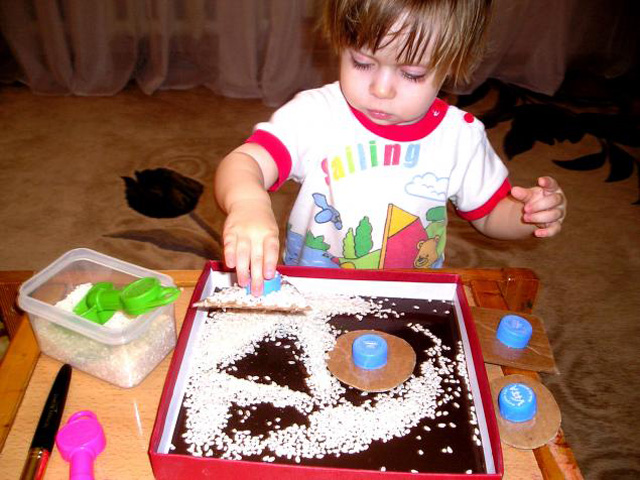 Perfectly develop fine motor skills of variouslaces. There are a lot of options for lacing. First, it can be ordinary beads, buttons or other small objects with holes that need to be strung on a string. Secondly, you can learn to tie a bow on a bow or string shoes (sew it in the form of appliqués on a panel, rug or book). Third, lacing is easy to create as pictures or books. The main panel (workpiece) is made of plastic or a large sheet of solid paper. Holes in it can be scrolled with scissors or an awl. Draw the other objects, glue them, or attach them with a fishing line. For the didactic game, select poems, stories, etc., for the preparation.
Perfectly develop fine motor skills of variouslaces. There are a lot of options for lacing. First, it can be ordinary beads, buttons or other small objects with holes that need to be strung on a string. Secondly, you can learn to tie a bow on a bow or string shoes (sew it in the form of appliqués on a panel, rug or book). Third, lacing is easy to create as pictures or books. The main panel (workpiece) is made of plastic or a large sheet of solid paper. Holes in it can be scrolled with scissors or an awl. Draw the other objects, glue them, or attach them with a fishing line. For the didactic game, select poems, stories, etc., for the preparation. 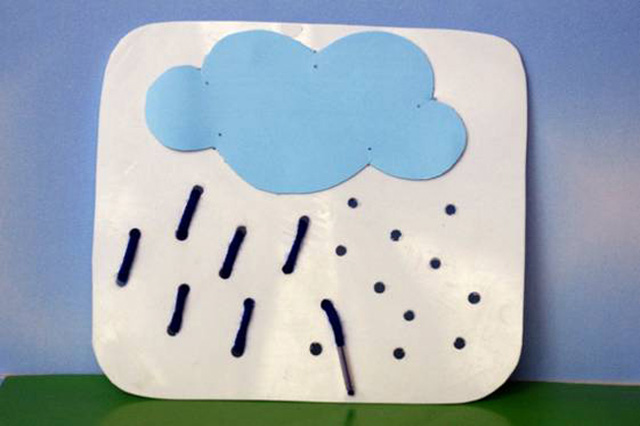 Similar to lacing, you can do and tactileToys for picking and pulling ribbons and cords. Their implementation is the most diverse: the easiest way to train your hands is to pull out ribbons (from both sides tie knots) out of the ordinary of any jar (you'll need to punch holes in the lid). Slightly more difficult is the option to sew in multicolored and different-colored ribbons, shreds, shoelaces with beads, etc., into a fabric blank or a soft toy.
Similar to lacing, you can do and tactileToys for picking and pulling ribbons and cords. Their implementation is the most diverse: the easiest way to train your hands is to pull out ribbons (from both sides tie knots) out of the ordinary of any jar (you'll need to punch holes in the lid). Slightly more difficult is the option to sew in multicolored and different-colored ribbons, shreds, shoelaces with beads, etc., into a fabric blank or a soft toy. 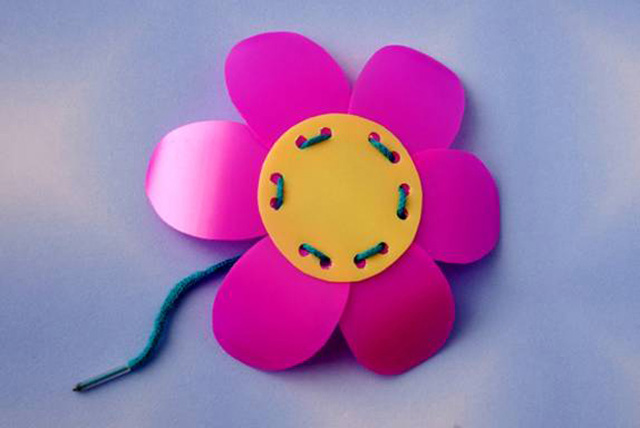 Fine motor skills are well trained evensimple clothespins. In addition, with their use, you can come up with a lot of didactic games. Make simple pieces of colored felt or thick paper (under the sun, hedgehog, cloud, herringbone, caterpillar, etc.) and play with the child various stories. So the kid will learn to make coherent stories, invent fairy tales, fantasize. At the same time, you can study colors and a quantitative score. Similar games are made with clips (plastic and colored).
Fine motor skills are well trained evensimple clothespins. In addition, with their use, you can come up with a lot of didactic games. Make simple pieces of colored felt or thick paper (under the sun, hedgehog, cloud, herringbone, caterpillar, etc.) and play with the child various stories. So the kid will learn to make coherent stories, invent fairy tales, fantasize. At the same time, you can study colors and a quantitative score. Similar games are made with clips (plastic and colored). 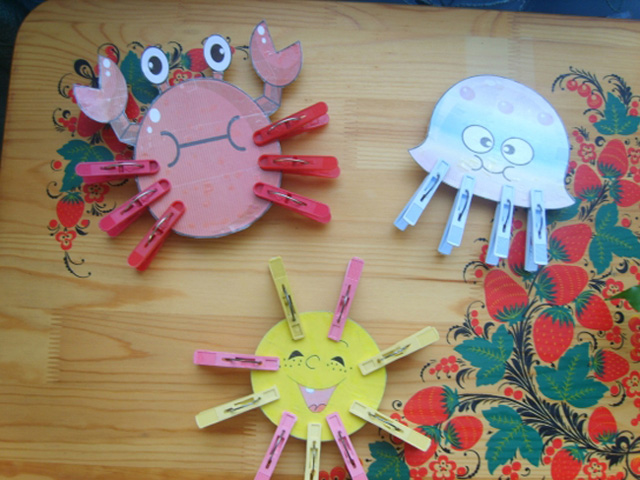 Very useful for fine motor skills alsobutton and unbutton buttons, Velcro, buttons and zippers. The whole range of hand simulators can be placed on the developing mat or panel, also an excellent option - a voluminous soft book on every page of which the baby will be waiting for all sorts of adventures and discoveries. The content of these toys depends on your imagination and needlework. You can choose a specific plot: seasons, numbers, letters, colors, shapes, and you can make assorted when the child in parallel will learn everything together.
Very useful for fine motor skills alsobutton and unbutton buttons, Velcro, buttons and zippers. The whole range of hand simulators can be placed on the developing mat or panel, also an excellent option - a voluminous soft book on every page of which the baby will be waiting for all sorts of adventures and discoveries. The content of these toys depends on your imagination and needlework. You can choose a specific plot: seasons, numbers, letters, colors, shapes, and you can make assorted when the child in parallel will learn everything together.  Collect the design of the book can be on the curtainrings or ribbon (you will need to sew stitches in each page). To make the book soft, put a layer of sintepon into the pages. For the convexity of individual elements, filler or sintepon is also suitable. Details can be glued and attached to the background. Babies really like mobile elements (use Velcro, buttons, ropes), rustling elements (put inside cellophane). With the help of rugs, panels and books created by themselves, you can not only develop the sensory abilities of the baby, but also his imagination, and also teach different knowledge and skills.
Collect the design of the book can be on the curtainrings or ribbon (you will need to sew stitches in each page). To make the book soft, put a layer of sintepon into the pages. For the convexity of individual elements, filler or sintepon is also suitable. Details can be glued and attached to the background. Babies really like mobile elements (use Velcro, buttons, ropes), rustling elements (put inside cellophane). With the help of rugs, panels and books created by themselves, you can not only develop the sensory abilities of the baby, but also his imagination, and also teach different knowledge and skills. 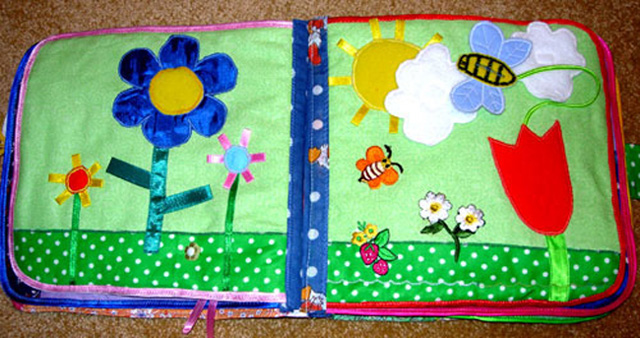 Rugs and panels can be made as billetscenery for puppet theaters - better finger. Although the dolls on hand will also be good. Look great figures and decorations from felt and even from colored paper. Even with a single felt figure, you can come up with a variety of didactic games and assignments (count, teach colors, shape, size, navigate in space, notice what has changed or "do not become," compose stories, etc.).
Rugs and panels can be made as billetscenery for puppet theaters - better finger. Although the dolls on hand will also be good. Look great figures and decorations from felt and even from colored paper. Even with a single felt figure, you can come up with a variety of didactic games and assignments (count, teach colors, shape, size, navigate in space, notice what has changed or "do not become," compose stories, etc.).  You can even make a whole stand (made of wood orDSP panel), which is worth attaching everything that a child is interested in in a "big" life: switches, door locks or latch, telephone dial, buttons, pens and other. As you can see, educational toys for fine motor skills can be easily made by yourself, without any special skills or abilities. At the same time, your money and time costs for this will be minimal, most importantly - arm yourself with desire and imagination.
You can even make a whole stand (made of wood orDSP panel), which is worth attaching everything that a child is interested in in a "big" life: switches, door locks or latch, telephone dial, buttons, pens and other. As you can see, educational toys for fine motor skills can be easily made by yourself, without any special skills or abilities. At the same time, your money and time costs for this will be minimal, most importantly - arm yourself with desire and imagination.




